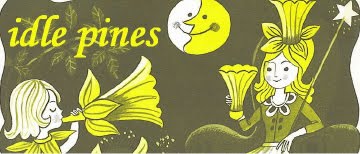Lilian Turner was born on 21 August 1867 in Lincoln, England, the eldest daughter of Bennett George Burwell and Sarah Jane, née Shaw. Lilian had a difficult childhood, her stepfather being much stricter with her than he was with her sister, Ethel. As an author, Lilian constantly wrote in the shadow of her sister’s initial successes and popularity (ADB 292). Lilian was educated at Sydney Girls’ High School where she and her sister ran a rival paper to the official school magazine edited by Louise Mack. Lilian was co-founder of the Parthenon with Ethel. Lilian’s first novel, The Lights of Sydney, won Cassell’s Novel Competition in 1894. From 1902 to 1931 Lilian wrote over twenty girls’ novels, the majority published by Ward, Lock & Co. Lilian married Frederick Lindsay Thompson on 22 February 1898. Thompson was a dentist but had difficulty finding employment, so Lilian supported her family through her writing. They had two sons, Dick, and Douglas, who later became a journalist and author. Ethel often helped her sister financially, especially after Fred died in 1924 (ADB 292). Lilian died on 25 August 1956 in Turramurra, New South Wales.
The Girl from the Back-Blocks. London: Ward, Lock & Co., Limited, [1914]. 256 pages. Illustrated 'J. Macfarlane', b/w frontis. & 7 b/w illus.
Turner uses a new girl storyline in both of her school stories. In The Girl from the Back-Blocks, Joan, a country girl, is sent unwillingly to Greythorpe School, in order to become a lady. A common motif in the new girl story was a new girl who had never been to school before and who is portrayed as a misfit, awkward and out of place. Other examples of this can be seen in Parker’s For the Sake of a Friend. Joan’s arrival is sensational, she has a screaming fit, and has trouble fitting in. Joan begins to idolise one of her classmates, Ellie Campbell, and when Ellie rescues Joan from drowning during a swimming lesson, they become friends (of sorts). Joan’s adventures cause the girls to view her as a heroine and they begin to accept her instead of mocking her because of her differences. Turner uses a slight variation on the falsely accused motif in an incident in the story. Some of the senior girls purchase a necklace for a teacher’s leaving present and the pendant is lost during a scrimmage in Joan’s dormitory. One of the girls accuses Joan of stealing it, and when Joan sees Ellie wearing a necklace she thinks her idol stole the pendant and decides to falsely confess her guilt to shield her. Most falsely accused plots do not involve the heroine falsely confessing. The Head decides that Joan will have to be expelled, but the appearance of one of the school maids with the pendant which had fallen behind a piece of furniture clears Joan, and also Ellie. The girls once more consider Joan a heroine and call her ‘Plucky Joan’ and ‘True Blue Joan’. Turner touches on the concept of the schoolgirl honour code through the Head’s thoughts: "a schoolgirl, like a soldier, can be sudden and quick in quarrel, passionate beyond control, and yet hold her honour dearer than her life" (254).
Jill of the Fourth Form. London: Ward, Lock & Co., 1924. 256 pages. Illustrated J. Dewar Mills, b/w frontis. & 3 b/w illus.
Jill of the Fourth Form centres on sixteen-year-old Jill Colville who lives with her Aunt while her father is a Colonel in the Army. Jill is increasingly dissatisfied with her life and when she overhears some party guests commenting on how spoilt and pampered she is, decides to write to her father begging him to let her go to school. Jill of the Fourth Form follows her adventures at Highcastle College and how she learns to fit in. To prepare herself for school Jill decides to buy some school stories, but getting only boys’ school stories, she teaches herself slang and tricks to survive the expected first night dormitory rags, only to find her dorm has a twenty-four hour rule of not interfering with ‘newies’. However she puts them to good use on her second night when she makes a dummy to put in her bed and foils their plans. She passes the series of initiation tests on the third night, including walking on the balcony railing. When she is caught the girls pretend she was sleepwalking and the next day Jill finds she has achieved instant fame for her heroic deeds, though this only lasts a week before it is eclipsed by a girl breaking her wrist. An adventure occurs during a Form Picnic to the Look Out at Mount Desolation. One of the girls, Joan, falls down the cliff side and Jill once again becomes a heroine to the girls, by rescuing her. Turner uses similar incidents in her other school story, The Girl from the Back Blocks, involving rescues. Authors often placed their heroines in dangerous situations and detailed thrilling rescue, either being the rescuer or being rescued.




No comments:
Post a Comment